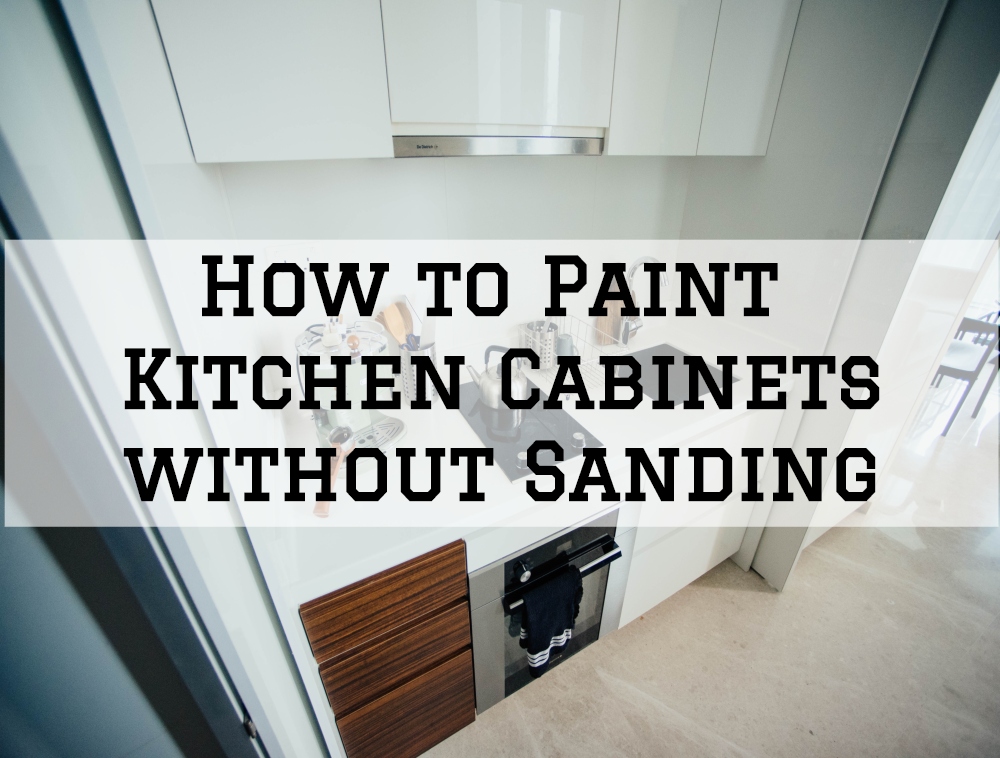
Painting your kitchen cabinets can seem like something impossible, but it’s simplified further when you don’t have to sand the doors before applying the paint. To do the painting work without sanding, you will require a de-glosser which is capable of removing any vanish from the surfaces of the cabinets.
You should prime immediately to ensure that the paint sticks. This is a perfect project for all those who want to upgrade their kitchen easily and without wasting much time.
Here are some of the best tips for painting your kitchen cabinets without sanding;
Detach the Drawers and Doors
-
Remove all components from the drawers and place them in a safe area. You might be required to lift them up before removing them from the tracks in the drawer. Ensure that you avoid pulling the entire track in the due process. In case they are difficult to remove, just leave them and make sure they are painted together with the frame.
-
Using a drill, remove all the hinges and hardware from the drawers and doors and store them safely according to their sizes. Turn to the back of the door to remove screws from the door hardware and place them, handles and pulls aside for reuse.
-
Detach the shelves after removing all the components of the cabinets and placing them in a safe labeled place or box. In case your cabinet shelves are in-built in the cabinet without the shelf holding brackets, you will have no option but to paint them together with the frame.
How to Clean the Cabinets
Follow the following steps to clean the cabinet;
-
Using a scrubbing sponge, spread a de-glosser to the frames and doors prior to painting the cabinets. Thoroughly scrub the cabinet doors, drawers, frames and shelves to eliminate all the dust and left-over dirt to ensure that they are clean and free from dust. Don’t concentrate on scrubbing a single section for long to avoid scratching the wooden surface.
-
Using a wet cloth, clean all components and allow them to dry –be sure to reach all the hidden areas. Allow it to dry for a minimum of one hour.
-
Smear the de-glosser on a cloth and rub it onto the drawers and doors and place them in a well-ventilated area. Using a clean cloth, wipe the de-glosser on all fronts and backs of the drawers as well as the door.
-
Never apply the de-glosser indoors as it is very potent and can be harmful if the fumes are inhaled.
-
Allow the de-glosser to dry for 30 minutes. Avoid touching the de-glosser with your hands to see if it’s dry as it can be very strong
How to Paint the Frames and Doors
-
One hour after the de-glosser has dried; it is recommended that you apply primer to the cabinets. Using a medium bristle brush, spread the primer on the fronts of drawers and doors. After that, apply a coat to the frames as you wait for the primer to dry. Delayed application of the primer could cause it not to stick well to surfaces.
-
Prime the door backs after 30 minutes and then allow 2 hours for the primer to dry completely on both sides. Always remember that your objective is to prime the drawers and doors within an hour after the de-glosser dries.
-
Using a roller, paint a coat of cabinet enamel to the backs of the doors and drawers. Finalize up with a fine brush to avoid bubbles allowing the paint to dry for four hours before turning them over to paint the fronts. Paint the sides of the drawers for uniformity.
-
In case the front of your cabinets have moldings or designs on the front faces, use a fine bristle brush to apply the paint as this will ensure that smaller curves are reached.
-
While the drawers and doors are dry, paint the frames and shelves. Finish each section using a fine bristle brush to eliminate the air bubbles on the surfaces. This will also ensure that the corners and joints are well painted.
-
Apply another coat to the cabinets once they are dry.
-
Allow 24 hours for the paint to dry before you reattach the drawers and doors to prevent the cabinet from scratching. For perfect work, use a screwdriver when reattaching the hardware back to the cabinet.
-
Reattach the drawers and the doors to finalize your cabinet repaint and examine them to ensure that they work properly.
So if you would like to do a cabinet repaint job but don’t want to go through the back-breaking process of sanding, the above tips should come in handy.
